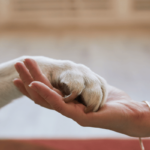Introducing birds into a household with dogs and cats can be a rewarding experience. It requires careful planning to ensure harmony among the pets. This guide provides practical steps to create a safe and enriched environment for all animals involved.
Understanding Your Pets’ Behaviors

Introducing birds to dogs and cats starts with understanding their natural behaviors. Dogs are generally curious and may see birds as playthings, while cats have a predatory instinct that can be triggered by the sight of a bird. To mitigate these behaviors, ensure all pets have their own spaces where they feel safe and secure. Gradual introductions, starting with visual and scent interactions, can help acclimate your pets to each other’s presence.
Introducing birds into the life of dogs and cats can be done safely with proper supervision. Initially, keep the bird in a secure cage in a separate room, allowing the other pets to get used to the new scents and sounds. Over time, you can bring the cage into a common area, closely monitoring the pets’ reactions. Patience and consistency are key to fostering positive interactions.
It’s crucial to create an environment where each pet feels secure. Providing vertical spaces for birds, such as perches or bird trees, can help them feel safer from ground-level threats. For dogs and cats, ensure they have their own areas with comfortable bedding and toys. These measures help prevent territorial disputes and promote a peaceful coexistence among all pets.
When introducing birds to dogs and cats, use positive reinforcement to encourage good behavior. Reward your pets with treats and praise when they interact calmly with the bird. This approach helps reinforce the idea that being around the bird is a positive experience. Consistent training and reinforcement are essential for long-term harmony.
Creating a Safe Space for Birds
Birds require a safe and secure environment to thrive. Ensure their cages are sturdy and placed in areas free from drafts and direct sunlight. Dogs and cats should not have direct access to the bird’s cage. Use barriers or place the cage at a height that is out of reach for curious pets.
When introducing birds into the life of dogs and cats, supervision is essential. Never leave your pets unsupervised until you are confident they can coexist peacefully. Gradually increase the time they spend together, always monitoring for signs of stress or aggression. If any pet shows signs of distress, separate them immediately and try again later.
Birds need mental and physical stimulation to stay healthy and happy. Provide toys, foraging opportunities, and regular interaction to keep them engaged. These activities help reduce stress and prevent boredom, making them less likely to provoke curiosity or aggression from dogs and cats. A well-enriched environment benefits all pets.
Gradual Introduction Process
The process of introducing birds to dogs and cats should be gradual and well-managed. Start with short, supervised sessions, gradually increasing the time as all pets become more comfortable. Patience and consistency are crucial in ensuring a smooth transition and preventing any negative encounters.
Begin by allowing your pets to observe each other from a distance. This can help them get used to each other’s presence without direct interaction. Gradually decrease the distance over time, always watching for signs of stress or aggression. This methodical approach helps build positive associations and reduces the risk of negative interactions.
Regular training sessions for dogs and cats can help them learn to coexist peacefully with birds. Use commands like “stay” and “leave it” to manage their behavior around the bird. Reward them for calm behavior and redirect any signs of aggression. Consistent training is key to creating a harmonious multi-pet household.
Creating a Secure Environment
Creating a secure environment for birds is crucial when introducing them to dogs and cats. Ensure that the birdcage is robust and placed in an area where dogs and cats cannot easily reach. This will prevent any attempts by the dogs and cats to disturb the bird, ensuring the bird’s safety and reducing stress for all pets involved.
Additionally, it’s essential to provide high perches and hidden spaces for birds. These areas allow birds to retreat and feel safe from potential threats. For dogs and cats, ensure they have comfortable zones with beds and toys where they can relax and feel secure. A well-structured environment helps reduce anxiety and promotes peaceful coexistence.
Using Positive Reinforcement
Positive reinforcement plays a significant role in introducing birds into the life of dogs and cats. Rewarding calm and gentle behavior around the bird with treats and praise encourages dogs and cats to associate the bird with positive experiences. This method helps in building a peaceful and friendly relationship among all pets.
Consistency in training is crucial. Regularly practice commands like “stay” and “leave it” with your dogs and cats to manage their behavior around the bird. Over time, these commands become ingrained, and pets learn to coexist harmoniously. Positive reinforcement and consistent training ensure long-term success in a multi-pet household.
Managing Interactions
Managing interactions between birds, dogs, and cats is essential for their safety and well-being. Supervised interactions should be the norm until you are confident that all pets can coexist peacefully. Gradually increase the duration of these sessions, always monitoring for signs of stress or aggression.
If any pet shows signs of discomfort, separate them immediately and allow them time to calm down. This approach helps prevent negative experiences and fosters a positive environment. Over time, with patience and consistent management, pets can learn to live together harmoniously.
Ensuring Mental Stimulation
Mental stimulation is vital for the well-being of birds, dogs, and cats. Provide a variety of toys and activities to keep them engaged and prevent boredom. For birds, include foraging toys, mirrors, and interactive playthings. For dogs and cats, consider puzzle feeders and regular play sessions.
Engaging pets in stimulating activities reduces stress and helps them adjust to each other’s presence. A well-stimulated pet is less likely to display negative behaviors, making the introduction process smoother. Mental enrichment is a key component in maintaining a peaceful multi-pet household.
Regular Health Checks

Regular health checks are essential when introducing new pets to your household. Schedule vet visits for all pets to ensure they are healthy and free from any contagious diseases. This is particularly important when introducing birds, as they can be susceptible to illnesses carried by dogs and cats.
Maintaining a clean and hygienic environment also contributes to the health and well-being of all pets. Regularly clean cages, bedding, and common areas to prevent the spread of germs. Healthy pets are happier and more likely to adapt well to new companions.
Building a Routine
Building a routine helps pets adjust to each other and their new environment. Establish regular feeding times, play sessions, and rest periods for all pets. A consistent routine provides a sense of security and predictability, reducing anxiety and promoting harmony.
Include all pets in family activities and ensure they have ample opportunities to bond with each other. Gradual integration into the daily routine helps pets feel more comfortable and accepted. Over time, this fosters a strong, positive relationship among all members of the household.
Seeking Professional Help
If you encounter difficulties during the introduction process, don’t hesitate to seek professional help. A veterinarian or a pet behaviorist can provide valuable insights and strategies tailored to your specific situation. Professional guidance can help address any issues and ensure a smooth transition for all pets.
Remember that each pet is unique, and their adjustment period may vary. Patience, understanding, and professional support can make a significant difference in creating a harmonious multi-pet household. With the right approach, introducing birds into the life of dogs and cats can be a rewarding experience for everyone involved.
Ensuring Harmony Among Your Pets
Introducing birds into a household with dogs and cats requires careful planning and supervision. Understanding each pet’s natural behavior is crucial to ensuring a smooth introduction. By creating separate spaces and gradually increasing interactions, you can foster a peaceful coexistence. Positive reinforcement and consistent training are essential for long-term success.
Birds need a safe, enriched environment to thrive alongside dogs and cats. Providing vertical spaces, toys, and foraging opportunities helps reduce stress and boredom. Gradual introductions and consistent supervision are key to preventing negative interactions and ensuring harmony among all pets. For more tips on creating a peaceful multi-pet household, visit our blog.
Positive reinforcement and patient supervision are critical in creating a harmonious environment. Regular training sessions for dogs and cats, coupled with enrichment activities for birds, ensure all pets are engaged and happy. With time and effort, you can successfully integrate birds into your multi-pet household, creating a loving and peaceful home for all.
- The Spruce Pets – How to Introduce a New Bird to Other Pets
- PetMD – Tips for Introducing New Pets
- American Veterinary Medical Association (AVMA) – Pet Ownership and New Pet Introductions
- RSPCA – Introducing Birds to Other Pets

Join Marjorie Pearson at dwfocus.com, your guide in the pet parenting world. As an experienced animal behaviorist, Marjorie offers heartfelt advice for pet owners. Her expertise spans from nurturing kittens to understanding dogs’ playful antics. She’s passionate about enhancing the bond between pets and their humans through understanding and empathy. Discover Marjorie’s practical training tips and insights on dwfocus.com, enriching your journey as a pet owner. #4PawsAndOwners #MarjorieEarsonPetWhisperer #dwfocus








